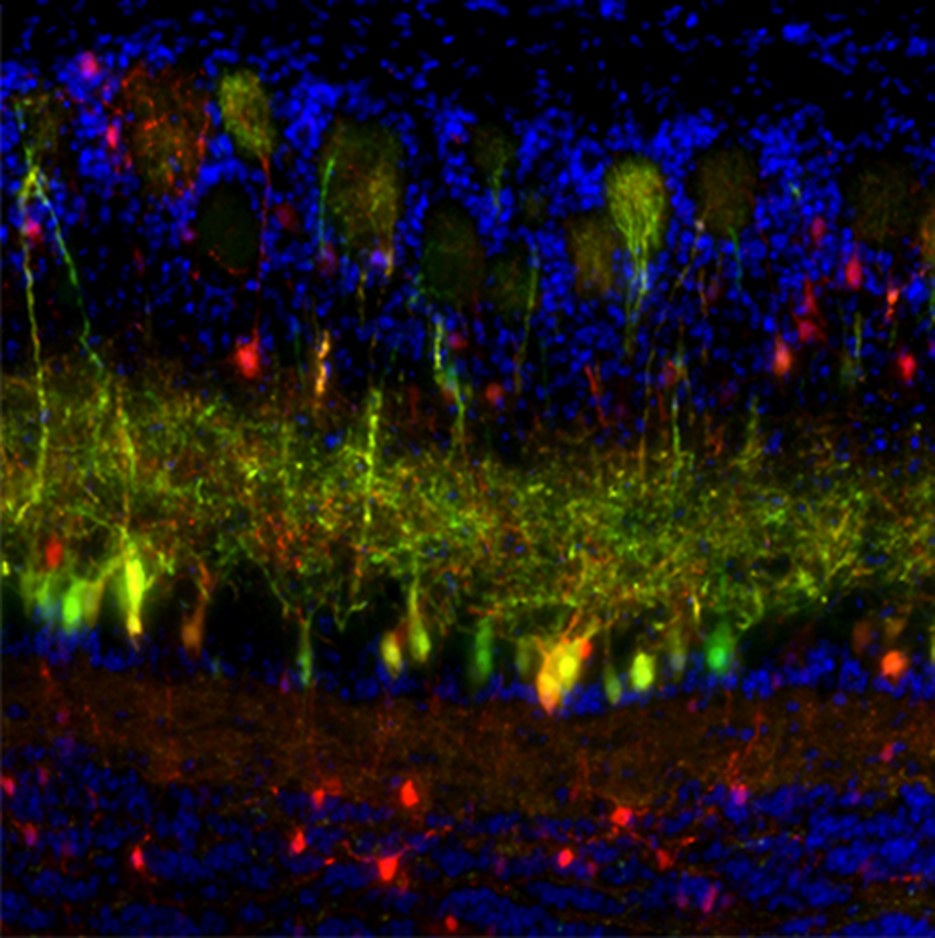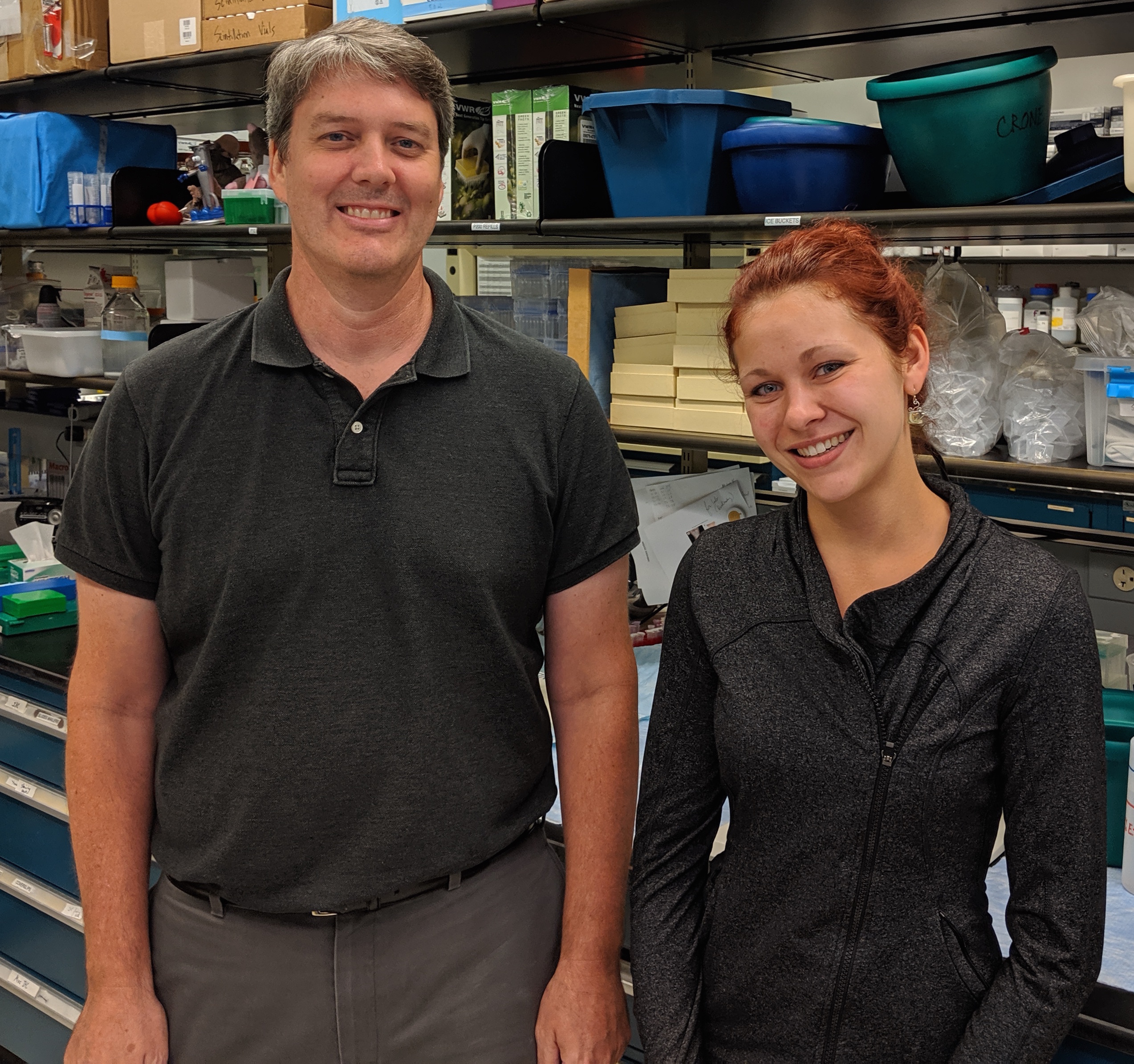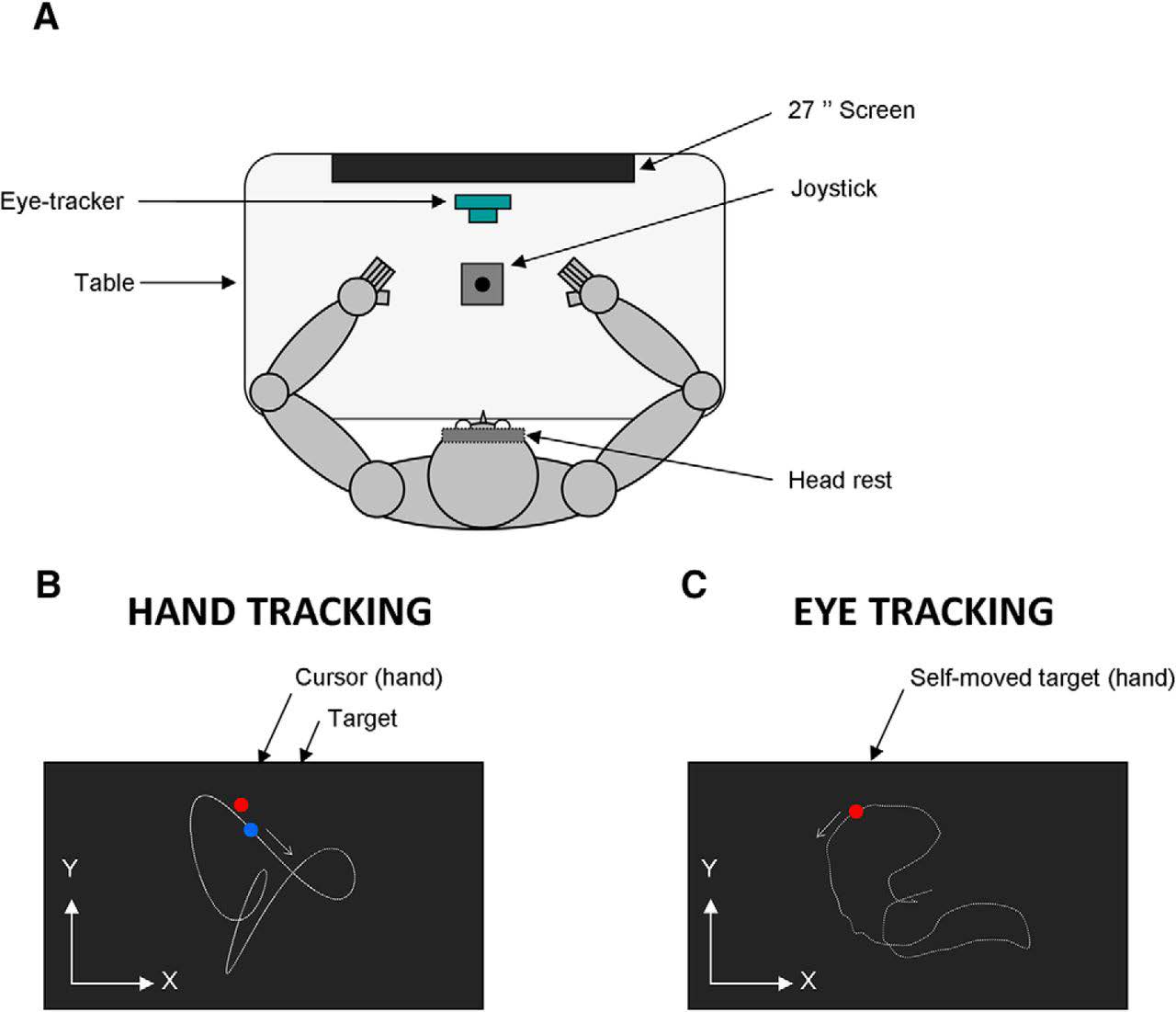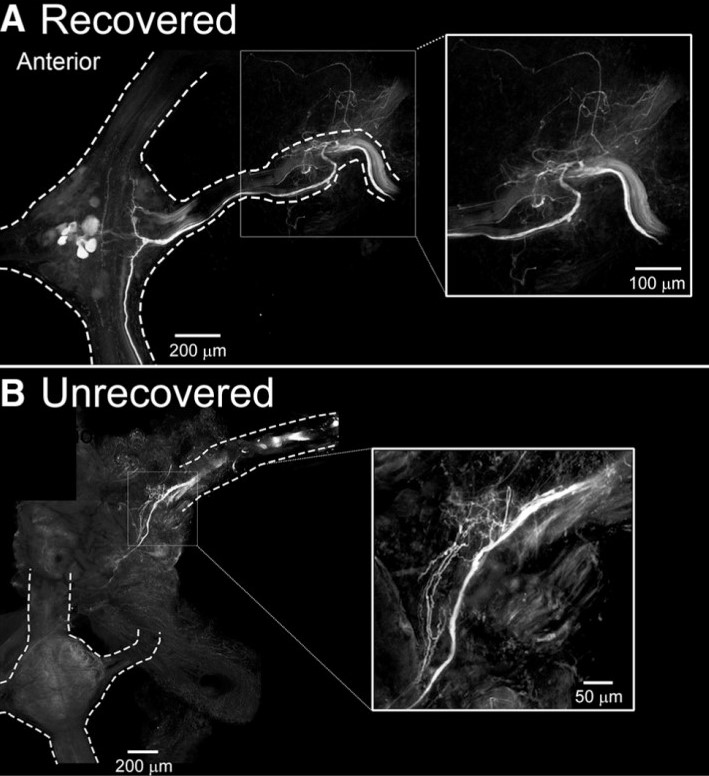Sensory and Motor Systems
A confocal image showing a neuron, likely a fusiform cell, at the dorsal cochlear nucleus of a coronal slice from a mouse expressing CaMKIIα-ChR2-eYFP along its somatic membrane and dendrites.
This image shows a section of postnatal day 7 mouse olfactory bulb in which plasmids encoding fluorescent proteins were introduced at embryonic day 11 with in utero electroporation.
Omri Nachmani and Gunnar Blohm talk about their paper on how sensorimotor prediction and uncertainty modulate oculomotor tracking behavior, and share their thoughts on publishing through the Registered Report format.
PhD Candidate Victoria Jensen and Dr. Steven Crone tell the story behind their eNeuro paper that showed that glutamatergic V2a neurons participate in a circuit that serves to constrain the activity of accessory respiratory muscles so that they are active only when needed.
Authors show that although handedness impacts the accuracy of hand movement control, it has virtually no influence on the ability to predict the visual consequences of hand movements.
Authors show that one olfactory cortical structure, the olfactory tubercle, is unique among olfactory cortices in that it lacks feedback projections to the olfactory bulb.
Authors demonstrate that in the absence of descending cephalic input, locomotor recovery in the leech is achieved by a switch to dependence on afferent information from peripheral nerves in the body wall.
A new study shows that advillin expression is NOT limited to sensory neurons in postnatal and adult mouse
FOLLOW US
TAGS
CATEGORIES








 RSS Feed
RSS Feed




